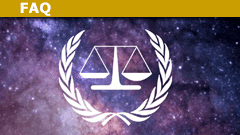7 Basic Space Law Questions Explored
*This Insight is intended to have a logical basis but not to be taken as purely factual or legal advice.
Table of Contents
Key Points
- Outer Space Treaty does not provide clear guidance on legality of satellite–based lasers
- One should apply to the ITU when planning a telecommunication satellite
- Do not interfere with remote sensing activities of other states
- Do not kill in outer space
- One should not appropriate the Moon or any other part of Outer Space as one‘s territory
Would ‘Star Wars’ have been legal?
Well, I’m afraid I cannot answer that with a definite “yes”… The essential feature of the American Strategic Defense Initiative (SDI), often dubbed ‘Star Wars’, concerned satellite-based lasers. Triggered by relevant information these would destroy the large majority of any fleet of attacking nuclear missiles during their trajectory through outer space. In that way, United States air defenses would have to cope only with a few remaining incoming missiles. The Outer Space Treaty provides no clear guidance on the lawfulness of such laser-weapon satellites. The stationing of weapons of mass destruction in space is indeed prohibited, but under “weapons of mass destruction” (the phrase used in relevant treaties) one usually understands nuclear, biological, and chemical weapons. Whether laser-beam weapons would fall within that category is debatable. Moreover, while SDI’s realization would perhaps have increased the risk of heightened tension between the superpowers, its purpose was proclaimed to be defensive. A state does have the right to defend itself against armed attacks from another state. This right does not simply expire because such defense might involve the use of space. Only in the case of the moon and other celestial bodies did the Outer Space Treaty adopt a more stringent regime. The moon and other celestial bodies were to be used for “exclusively peaceful purposes”. Of course, there are disputes on what exactly was allowable under this phrase: the Soviet Union for example interpreted ‘peaceful’ as “non-military”. The United States understood it to mean “non-aggressive” – thus allowing military satellites not capable of offensive use of force. SDI as such did not even reach the stage of testing, let alone operability. Probably for the better, this question, therefore, remains a theoretical one. After all, sending nuclear missiles through outer space has not been prohibited either – if only because neither superpower would have accepted such a rule.
Answer: One should not station weapons of mass destruction in Outer Space, but defensive lasers may be all right.
What are the traffic rules in space?
The answer, clearly, is not simply ‘driving left’ or ‘driving right’! ‘Traffic rules’ actually only exist with regard to the first phase of the launch of a space object to outer space. Of course, before a space object can enter outer space, it has to traverse airspace. As long as this concerns only the airspace of the country where the launch occurs, there is no real problem in legal terms. The national authorities will simply provide a virtual clearing of the way, by keeping airplanes out of the vicinity for the period, or by timing the launch in between passing aircraft – taking a wide margin of course. The legal problem occurs when space objects, which are seldom launched completely vertically, have to traverse part of another state’s airspace. Do they have the inherent right to do so, as a consequence of the right of access to outer space? Or must they receive the authorization of the state whose sovereign airspace is crossed for that purpose? Tentatively some argue that a “right of innocent passage” would exist. In the few cases such a passage of space objects on the way back to earth has occurred, the relevant states did not protest. Most think the passage of a space object through foreign airspace should be allowed, subject to such self-evident requirements as peaceful behavior and coordination with the national authorities on timing and trajectory.
Is there a television without frontiers?
Unfortunately, there is no unison answer to this question in legal terms. There was an intensive and interesting debate on this issue within the United Nations. A number of states suggested that broadcasting any program to any other state via satellite would be automatically allowed. Their argument was based on the freedom to undertake space activities (as confirmed by the Outer Space Treaty), as well as the freedom to impart information, as provided by general international law. This argument was mainly put forward by the liberal nations of the industrialized world. Their reasoning however was opposed by the majority of states (especially most of the developing countries), on the basis that sovereignty over national territories included the right to prohibit undesired broadcasts. These states were concerned that their cultural, social, and other national values would be eroded if no barrier to broadcasts could be provided. Such reasons, after all, could provide a justification under international law for conditioning the exercise of the freedoms of space activities and information which was claimed. The latter opinion, in the end, was accepted in a United Nations Resolution on the matter, in 1982. Under it, the right to broadcast into another state’s territory would be dependent upon the latter’s consent. However, the absence of legally binding powers of this Resolution, and the votes against of many industrialized nations (who were concerned that the right to deny consent would be abused to uphold dictatorial and backward regimes), have to be noted. As a consequence, there is no global answer to the legal problem. For many states, in law, no ‘television without frontiers’ is allowed without further ado. For others, such a right to sovereign consent is an anomaly, to be ignored in law as well as in practice…
Answer: One should be careful when broadcasting into another State without the latter’s consent.
How about phoning home from space?
Despite the general rule of freedom of the use of outer space, in practice, there are considerable restrictions on using satellites to provide communications. In the beginning, only satellites in the geostationary orbit were so used. This orbit, almost 36,000 km above the equator, has two main advantages. First, satellites in it appear to be stationary from down here so they do not need to be tracked by mobile antennae. Second, three satellites strategically placed in this orbit can serve more than 99% of the world’s population as only the polar regions would not be covered. The International Telecommunication Union (ITU) coordinates the distribution of the two natural ‘resources’ required for operating a communication satellite: a particular place on the orbit and the frequencies for transmission of ‘uplink’ and ‘downlink’ signals to and from the satellite. The ITU essentially plays an intermediary role amongst the states and has no enforcement powers, but even so, this system worked quite satisfactorily until recently. Now, however, as the geostationary orbit becomes ‘overcrowded’ and commercial interests more important, problems of preventing and settling disputes have become more acute. The role of the ITU is therefore crucial. Further, recent revolutionary technological developments will very soon lead to telecommunications satellites using much lower orbits – sometimes no more than a few hundred kilometers up. This means, first, fewer time lags in intercontinental conversations as the signal will not have to travel almost 72,000 km, and, second, the possibility of hand-held phones using satellites directly. It will thus be easy to phone home by satellite from virtually everywhere on the globe. Since low orbit systems will require many satellites orbiting at high speeds, one can imagine the legal problems! Nevertheless, the ground rule is still: let ITU coordinate your proposed satellite systems to achieve maximum respect for your satellite and minimum interference with its operations.
Answer: One should apply to the ITU in case one is planning a telecommunication satellite.
Is spying from space allowed?
Yes: space law does not prohibit spy satellites. In 1960 United States pilot Francis Gary Powers was shot down while flying a U 2-plane at an altitude of 25 km over the Soviet Union – that is: within its sovereign airspace. Since he did not have any authorization from Soviet authorities for his spying mission, his flight constituted a violation of the Soviet Union’s sovereignty, and because of the nature of his mission, shooting him down was not considered unlawful. The United States, wisely, did not protest. However, Outer Space is another matter. It is outside any individual state’s borders and can be freely used (as is confirmed by the Outer Space Treaty). This includes using satellites to spy on the territory. Shooting down a spy satellite is therefore not unlawful. Nowadays, a number of ‘spying’ satellites are also used for more civilian and often commercial purposes: detecting minerals, monitoring deforestation, and agriculture, tracing the sources of environmental pollution, and so on. This is usually called “remote sensing” or “earth observation”. But the rules are the same: you cannot stop it in law, and must not try to ruin the satellites’ signals. Claims regarding ‘state privacy, arguing that the sovereignty of a particular state would prohibit other states (or their private entities) from looking into its territory without permission, have not been accepted. In 1986 a United Nations Resolution provided that the state whose picture was being taken had no exclusive or preferential right to such picture, let alone the right to prohibit its being taken. While ‘sensed’ states have some rights to be consulted and to have access to data at a price, the underlying principle is the freedom to gather and distribute information. So, you see, you had better hide what should not see the light of day – and remember that many satellites can see as clearly at night as they can by daylight!
Answer: You should not interfere with the remote sensing activities of other States.
Can space killers be sentenced to death?
In principle: yes; but in any given case the answer depends on a few essential legal requirements. While outer space is not subject to the territorial application of sovereign laws, including laws on crimes, by means of its Article VIII the Outer Space Treaty provides states with the option of registering space objects, including those capable of sustaining human life on board. Such registration allows the state to extend the scope of any national law at least to such space objects, in the same way, that is done for airplanes and ships. In other words: if for example the United States registered a space station under its flag and extended the relevant criminal legislation to crimes onboard it (a major problem for the U.S. since criminal laws differ internally from state to state!), someone committing murder on that space station could be sentenced to death. Under the same conditions, the use of alcohol can lead to severe punishment were it to occur on an Arab space station – and wedding two women simultaneously on board of a Dutch space station would lead to a verdict, too! The most interesting case – in theory; fortunately so far no murder has occurred in space – is presented by the future international space station in which the United States, Russia, Japan, Canada, and some ten European states participate. The solution reached might have been devised by King Solomon himself: each partner state in this visionary international cooperation adventure registers its own part of the station – and consequently can apply its own laws to events therein. This represents an additional problem in the case of Europe, where the European Space Agency (ESA) has registered the European module but, as an international organization, does not possess its own criminal legislation (nor the courts or the police to enforce it). But one thing is clear: murder on the American module would lead to quite a different verdict compared to murder on the Japanese one. That may be, but verdicts there will be.
Answer: You should not kill in outer space, either.
Who owns the moon?
No one owns the moon, and no one can own the moon!
Recently, a legal dispute has arisen between Mr. Dennis Hope, an American businessman, who is selling estate on the moon after having filed a claim for ownership with his local United States authorities, and Mr. Martin Jürgens, a German pensioner who can show a certificate of the 17th-century Prussian King Frederick the Great, bestowing upon his ancestor the ownership of the moon as an award for services rendered.
Neither of these claims could possibly be honored, however. You cannot give away what you do not possess yourself, and that holds good for an American municipal official as well as for a Prussian king. And apart from that, the most fundamental Article of space law, Article II of the Outer Space Treaty of 1967 (often called the ‘Magna Carta’ of Space Law), expressly excludes the possibility that any state may incorporate any part of outer space, including the moon, into its territory.
One consequence is that the legal systems of states cannot be simply extended to outer space, and this includes any particular regulation dealing with ownership claims by private persons. Judges have to solve legal disputes and pronounce verdicts, for example on ownership conflicts, on the basis of one applicable law or another. No judge could therefore honor any claim by a private person, as long as no relevant system has been evolved on the international level – that is: with all relevant states agreeing thereto!
For the same reason, when Neil Armstrong planted the United States flag on the moon back in 1969, he did not annex the Moon or any part thereof as United States territory. By the way, the flag was fake, being made of metal and incapable of blowing in the wind!
Answer: One should not appropriate the Moon or any other part of Outer Space as one’s territory.
FAQ
What is space law?
Space law is an area of international law that governs activities in outer space. It is comprised of a body of treaties, international agreements, and customary international law that applies to activities in outer space and on celestial bodies such as the Moon and other planets.
Who regulates space law?
Space law is regulated by the United Nations Committee on the Peaceful Uses of Outer Space (UNCOPUOS). UNCOPUOS is responsible for providing international leadership and guidance on the legal, scientific, and technical aspects of the exploration and use of outer space.
What are the principles of space law?
The principles of space law include the freedom of exploration and use of outer space by all states, the peaceful use of outer space, and the prevention of harmful interference with the activities of other states in outer space. Other principles include the right to freedom of scientific research in outer space, the liability of states for damage caused by their space objects, and the protection of the environment of outer space.
What are the treaties related to space law?
The five major treaties related to space law are the Outer Space Treaty, the Rescue Agreement, the Liability Convention, the Registration Convention, and the Moon Agreement. These treaties provide the legal framework for the exploration and use of outer space.
I have a BS in Information Sciences from UW-Milwaukee. I’ve helped manage Physics Forums for over 22 years. I enjoy learning and discussing new scientific developments. STEM communication and policy are big interests as well. Currently a Sr. SEO Specialist at Shopify and writer at importsem.com




Leave a Reply
Want to join the discussion?Feel free to contribute!